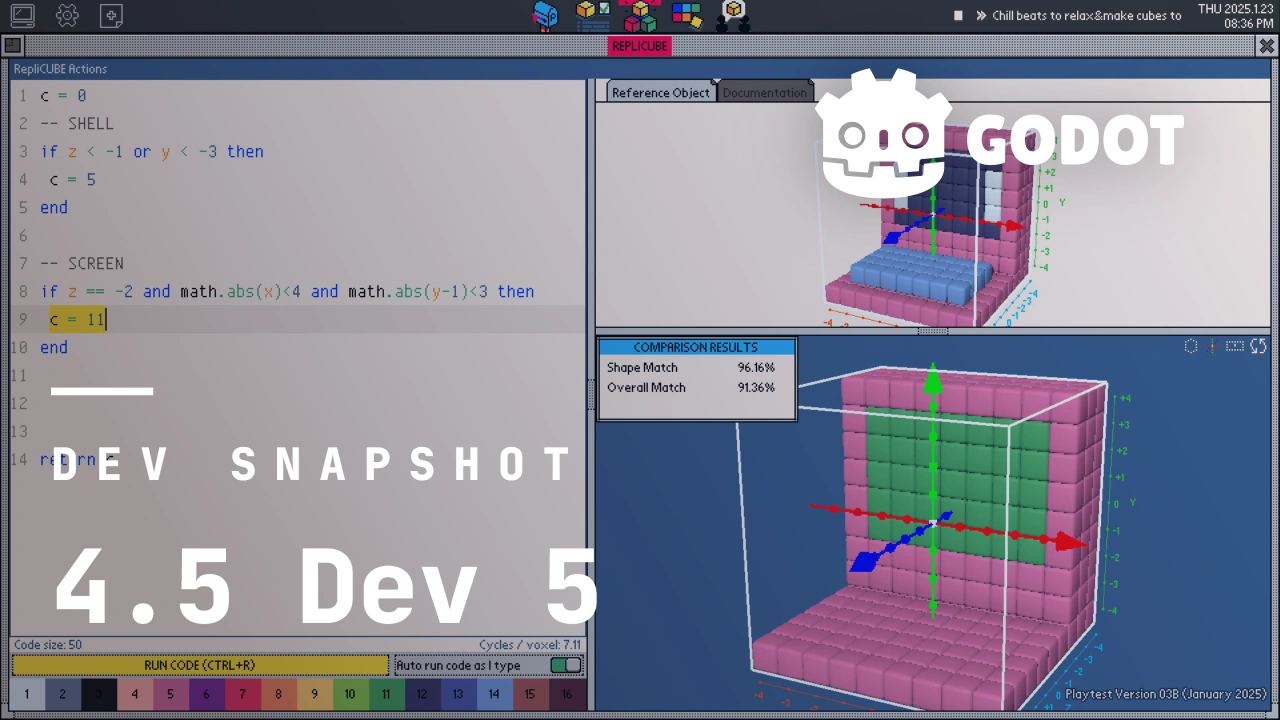IBM Plans Large-Scale Fault-Tolerant Quantum Computer by 2029
IBM Plans Large-Scale Fault-Tolerant Quantum Computer by 2029
By John P. Mello Jr.
June 11, 2025 5:00 AM PT
IBM unveiled its plan to build IBM Quantum Starling, shown in this rendering. Starling is expected to be the first large-scale, fault-tolerant quantum system.ADVERTISEMENT
Enterprise IT Lead Generation Services
Fuel Your Pipeline. Close More Deals. Our full-service marketing programs deliver sales-ready leads. 100% Satisfaction Guarantee! Learn more.
IBM revealed Tuesday its roadmap for bringing a large-scale, fault-tolerant quantum computer, IBM Quantum Starling, online by 2029, which is significantly earlier than many technologists thought possible.
The company predicts that when its new Starling computer is up and running, it will be capable of performing 20,000 times more operations than today’s quantum computers — a computational state so vast it would require the memory of more than a quindecillionof the world’s most powerful supercomputers to represent.
“IBM is charting the next frontier in quantum computing,” Big Blue CEO Arvind Krishna said in a statement. “Our expertise across mathematics, physics, and engineering is paving the way for a large-scale, fault-tolerant quantum computer — one that will solve real-world challenges and unlock immense possibilities for business.”
IBM’s plan to deliver a fault-tolerant quantum system by 2029 is ambitious but not implausible, especially given the rapid pace of its quantum roadmap and past milestones, observed Ensar Seker, CISO at SOCRadar, a threat intelligence company in Newark, Del.
“They’ve consistently met or exceeded their qubit scaling goals, and their emphasis on modularity and error correction indicates they’re tackling the right challenges,” he told TechNewsWorld. “However, moving from thousands to millions of physical qubits with sufficient fidelity remains a steep climb.”
A qubit is the fundamental unit of information in quantum computing, capable of representing a zero, a one, or both simultaneously due to quantum superposition. In practice, fault-tolerant quantum computers use clusters of physical qubits working together to form a logical qubit — a more stable unit designed to store quantum information and correct errors in real time.
Realistic Roadmap
Luke Yang, an equity analyst with Morningstar Research Services in Chicago, believes IBM’s roadmap is realistic. “The exact scale and error correction performance might still change between now and 2029, but overall, the goal is reasonable,” he told TechNewsWorld.
“Given its reliability and professionalism, IBM’s bold claim should be taken seriously,” said Enrique Solano, co-CEO and co-founder of Kipu Quantum, a quantum algorithm company with offices in Berlin and Karlsruhe, Germany.
“Of course, it may also fail, especially when considering the unpredictability of hardware complexities involved,” he told TechNewsWorld, “but companies like IBM exist for such challenges, and we should all be positively impressed by its current achievements and promised technological roadmap.”
Tim Hollebeek, vice president of industry standards at DigiCert, a global digital security company, added: “IBM is a leader in this area, and not normally a company that hypes their news. This is a fast-moving industry, and success is certainly possible.”
“IBM is attempting to do something that no one has ever done before and will almost certainly run into challenges,” he told TechNewsWorld, “but at this point, it is largely an engineering scaling exercise, not a research project.”
“IBM has demonstrated consistent progress, has committed billion over five years to quantum computing, and the timeline is within the realm of technical feasibility,” noted John Young, COO of Quantum eMotion, a developer of quantum random number generator technology, in Saint-Laurent, Quebec, Canada.
“That said,” he told TechNewsWorld, “fault-tolerant in a practical, industrial sense is a very high bar.”
Solving the Quantum Error Correction Puzzle
To make a quantum computer fault-tolerant, errors need to be corrected so large workloads can be run without faults. In a quantum computer, errors are reduced by clustering physical qubits to form logical qubits, which have lower error rates than the underlying physical qubits.
“Error correction is a challenge,” Young said. “Logical qubits require thousands of physical qubits to function reliably. That’s a massive scaling issue.”
IBM explained in its announcement that creating increasing numbers of logical qubits capable of executing quantum circuits with as few physical qubits as possible is critical to quantum computing at scale. Until today, a clear path to building such a fault-tolerant system without unrealistic engineering overhead has not been published.
Alternative and previous gold-standard, error-correcting codes present fundamental engineering challenges, IBM continued. To scale, they would require an unfeasible number of physical qubits to create enough logical qubits to perform complex operations — necessitating impractical amounts of infrastructure and control electronics. This renders them unlikely to be implemented beyond small-scale experiments and devices.
In two research papers released with its roadmap, IBM detailed how it will overcome the challenges of building the large-scale, fault-tolerant architecture needed for a quantum computer.
One paper outlines the use of quantum low-density parity checkcodes to reduce physical qubit overhead. The other describes methods for decoding errors in real time using conventional computing.
According to IBM, a practical fault-tolerant quantum architecture must:
Suppress enough errors for useful algorithms to succeed
Prepare and measure logical qubits during computation
Apply universal instructions to logical qubits
Decode measurements from logical qubits in real time and guide subsequent operations
Scale modularly across hundreds or thousands of logical qubits
Be efficient enough to run meaningful algorithms using realistic energy and infrastructure resources
Aside from the technological challenges that quantum computer makers are facing, there may also be some market challenges. “Locating suitable use cases for quantum computers could be the biggest challenge,” Morningstar’s Yang maintained.
“Only certain computing workloads, such as random circuit sampling, can fully unleash the computing power of quantum computers and show their advantage over the traditional supercomputers we have now,” he said. “However, workloads like RCS are not very commercially useful, and we believe commercial relevance is one of the key factors that determine the total market size for quantum computers.”
Q-Day Approaching Faster Than Expected
For years now, organizations have been told they need to prepare for “Q-Day” — the day a quantum computer will be able to crack all the encryption they use to keep their data secure. This IBM announcement suggests the window for action to protect data may be closing faster than many anticipated.
“This absolutely adds urgency and credibility to the security expert guidance on post-quantum encryption being factored into their planning now,” said Dave Krauthamer, field CTO of QuSecure, maker of quantum-safe security solutions, in San Mateo, Calif.
“IBM’s move to create a large-scale fault-tolerant quantum computer by 2029 is indicative of the timeline collapsing,” he told TechNewsWorld. “A fault-tolerant quantum computer of this magnitude could be well on the path to crack asymmetric ciphers sooner than anyone thinks.”
“Security leaders need to take everything connected to post-quantum encryption as a serious measure and work it into their security plans now — not later,” he said.
Roger Grimes, a defense evangelist with KnowBe4, a security awareness training provider in Clearwater, Fla., pointed out that IBM is just the latest in a surge of quantum companies announcing quickly forthcoming computational breakthroughs within a few years.
“It leads to the question of whether the U.S. government’s original PQCpreparation date of 2030 is still a safe date,” he told TechNewsWorld.
“It’s starting to feel a lot more risky for any company to wait until 2030 to be prepared against quantum attacks. It also flies in the face of the latest cybersecurity EOthat relaxed PQC preparation rules as compared to Biden’s last EO PQC standard order, which told U.S. agencies to transition to PQC ASAP.”
“Most US companies are doing zero to prepare for Q-Day attacks,” he declared. “The latest executive order seems to tell U.S. agencies — and indirectly, all U.S. businesses — that they have more time to prepare. It’s going to cause even more agencies and businesses to be less prepared during a time when it seems multiple quantum computing companies are making significant progress.”
“It definitely feels that something is going to give soon,” he said, “and if I were a betting man, and I am, I would bet that most U.S. companies are going to be unprepared for Q-Day on the day Q-Day becomes a reality.”
John P. Mello Jr. has been an ECT News Network reporter since 2003. His areas of focus include cybersecurity, IT issues, privacy, e-commerce, social media, artificial intelligence, big data and consumer electronics. He has written and edited for numerous publications, including the Boston Business Journal, the Boston Phoenix, Megapixel.Net and Government Security News. Email John.
Leave a Comment
Click here to cancel reply.
Please sign in to post or reply to a comment. New users create a free account.
Related Stories
More by John P. Mello Jr.
view all
More in Emerging Tech
#ibm #plans #largescale #faulttolerant #quantumIBM Plans Large-Scale Fault-Tolerant Quantum Computer by 2029
IBM Plans Large-Scale Fault-Tolerant Quantum Computer by 2029
By John P. Mello Jr.
June 11, 2025 5:00 AM PT
IBM unveiled its plan to build IBM Quantum Starling, shown in this rendering. Starling is expected to be the first large-scale, fault-tolerant quantum system.ADVERTISEMENT
Enterprise IT Lead Generation Services
Fuel Your Pipeline. Close More Deals. Our full-service marketing programs deliver sales-ready leads. 100% Satisfaction Guarantee! Learn more.
IBM revealed Tuesday its roadmap for bringing a large-scale, fault-tolerant quantum computer, IBM Quantum Starling, online by 2029, which is significantly earlier than many technologists thought possible.
The company predicts that when its new Starling computer is up and running, it will be capable of performing 20,000 times more operations than today’s quantum computers — a computational state so vast it would require the memory of more than a quindecillionof the world’s most powerful supercomputers to represent.
“IBM is charting the next frontier in quantum computing,” Big Blue CEO Arvind Krishna said in a statement. “Our expertise across mathematics, physics, and engineering is paving the way for a large-scale, fault-tolerant quantum computer — one that will solve real-world challenges and unlock immense possibilities for business.”
IBM’s plan to deliver a fault-tolerant quantum system by 2029 is ambitious but not implausible, especially given the rapid pace of its quantum roadmap and past milestones, observed Ensar Seker, CISO at SOCRadar, a threat intelligence company in Newark, Del.
“They’ve consistently met or exceeded their qubit scaling goals, and their emphasis on modularity and error correction indicates they’re tackling the right challenges,” he told TechNewsWorld. “However, moving from thousands to millions of physical qubits with sufficient fidelity remains a steep climb.”
A qubit is the fundamental unit of information in quantum computing, capable of representing a zero, a one, or both simultaneously due to quantum superposition. In practice, fault-tolerant quantum computers use clusters of physical qubits working together to form a logical qubit — a more stable unit designed to store quantum information and correct errors in real time.
Realistic Roadmap
Luke Yang, an equity analyst with Morningstar Research Services in Chicago, believes IBM’s roadmap is realistic. “The exact scale and error correction performance might still change between now and 2029, but overall, the goal is reasonable,” he told TechNewsWorld.
“Given its reliability and professionalism, IBM’s bold claim should be taken seriously,” said Enrique Solano, co-CEO and co-founder of Kipu Quantum, a quantum algorithm company with offices in Berlin and Karlsruhe, Germany.
“Of course, it may also fail, especially when considering the unpredictability of hardware complexities involved,” he told TechNewsWorld, “but companies like IBM exist for such challenges, and we should all be positively impressed by its current achievements and promised technological roadmap.”
Tim Hollebeek, vice president of industry standards at DigiCert, a global digital security company, added: “IBM is a leader in this area, and not normally a company that hypes their news. This is a fast-moving industry, and success is certainly possible.”
“IBM is attempting to do something that no one has ever done before and will almost certainly run into challenges,” he told TechNewsWorld, “but at this point, it is largely an engineering scaling exercise, not a research project.”
“IBM has demonstrated consistent progress, has committed billion over five years to quantum computing, and the timeline is within the realm of technical feasibility,” noted John Young, COO of Quantum eMotion, a developer of quantum random number generator technology, in Saint-Laurent, Quebec, Canada.
“That said,” he told TechNewsWorld, “fault-tolerant in a practical, industrial sense is a very high bar.”
Solving the Quantum Error Correction Puzzle
To make a quantum computer fault-tolerant, errors need to be corrected so large workloads can be run without faults. In a quantum computer, errors are reduced by clustering physical qubits to form logical qubits, which have lower error rates than the underlying physical qubits.
“Error correction is a challenge,” Young said. “Logical qubits require thousands of physical qubits to function reliably. That’s a massive scaling issue.”
IBM explained in its announcement that creating increasing numbers of logical qubits capable of executing quantum circuits with as few physical qubits as possible is critical to quantum computing at scale. Until today, a clear path to building such a fault-tolerant system without unrealistic engineering overhead has not been published.
Alternative and previous gold-standard, error-correcting codes present fundamental engineering challenges, IBM continued. To scale, they would require an unfeasible number of physical qubits to create enough logical qubits to perform complex operations — necessitating impractical amounts of infrastructure and control electronics. This renders them unlikely to be implemented beyond small-scale experiments and devices.
In two research papers released with its roadmap, IBM detailed how it will overcome the challenges of building the large-scale, fault-tolerant architecture needed for a quantum computer.
One paper outlines the use of quantum low-density parity checkcodes to reduce physical qubit overhead. The other describes methods for decoding errors in real time using conventional computing.
According to IBM, a practical fault-tolerant quantum architecture must:
Suppress enough errors for useful algorithms to succeed
Prepare and measure logical qubits during computation
Apply universal instructions to logical qubits
Decode measurements from logical qubits in real time and guide subsequent operations
Scale modularly across hundreds or thousands of logical qubits
Be efficient enough to run meaningful algorithms using realistic energy and infrastructure resources
Aside from the technological challenges that quantum computer makers are facing, there may also be some market challenges. “Locating suitable use cases for quantum computers could be the biggest challenge,” Morningstar’s Yang maintained.
“Only certain computing workloads, such as random circuit sampling, can fully unleash the computing power of quantum computers and show their advantage over the traditional supercomputers we have now,” he said. “However, workloads like RCS are not very commercially useful, and we believe commercial relevance is one of the key factors that determine the total market size for quantum computers.”
Q-Day Approaching Faster Than Expected
For years now, organizations have been told they need to prepare for “Q-Day” — the day a quantum computer will be able to crack all the encryption they use to keep their data secure. This IBM announcement suggests the window for action to protect data may be closing faster than many anticipated.
“This absolutely adds urgency and credibility to the security expert guidance on post-quantum encryption being factored into their planning now,” said Dave Krauthamer, field CTO of QuSecure, maker of quantum-safe security solutions, in San Mateo, Calif.
“IBM’s move to create a large-scale fault-tolerant quantum computer by 2029 is indicative of the timeline collapsing,” he told TechNewsWorld. “A fault-tolerant quantum computer of this magnitude could be well on the path to crack asymmetric ciphers sooner than anyone thinks.”
“Security leaders need to take everything connected to post-quantum encryption as a serious measure and work it into their security plans now — not later,” he said.
Roger Grimes, a defense evangelist with KnowBe4, a security awareness training provider in Clearwater, Fla., pointed out that IBM is just the latest in a surge of quantum companies announcing quickly forthcoming computational breakthroughs within a few years.
“It leads to the question of whether the U.S. government’s original PQCpreparation date of 2030 is still a safe date,” he told TechNewsWorld.
“It’s starting to feel a lot more risky for any company to wait until 2030 to be prepared against quantum attacks. It also flies in the face of the latest cybersecurity EOthat relaxed PQC preparation rules as compared to Biden’s last EO PQC standard order, which told U.S. agencies to transition to PQC ASAP.”
“Most US companies are doing zero to prepare for Q-Day attacks,” he declared. “The latest executive order seems to tell U.S. agencies — and indirectly, all U.S. businesses — that they have more time to prepare. It’s going to cause even more agencies and businesses to be less prepared during a time when it seems multiple quantum computing companies are making significant progress.”
“It definitely feels that something is going to give soon,” he said, “and if I were a betting man, and I am, I would bet that most U.S. companies are going to be unprepared for Q-Day on the day Q-Day becomes a reality.”
John P. Mello Jr. has been an ECT News Network reporter since 2003. His areas of focus include cybersecurity, IT issues, privacy, e-commerce, social media, artificial intelligence, big data and consumer electronics. He has written and edited for numerous publications, including the Boston Business Journal, the Boston Phoenix, Megapixel.Net and Government Security News. Email John.
Leave a Comment
Click here to cancel reply.
Please sign in to post or reply to a comment. New users create a free account.
Related Stories
More by John P. Mello Jr.
view all
More in Emerging Tech
#ibm #plans #largescale #faulttolerant #quantum

















